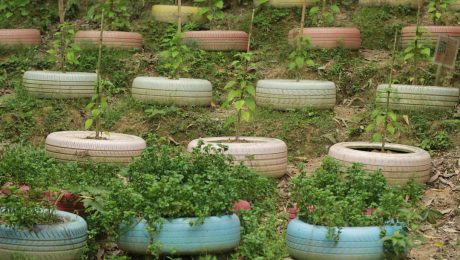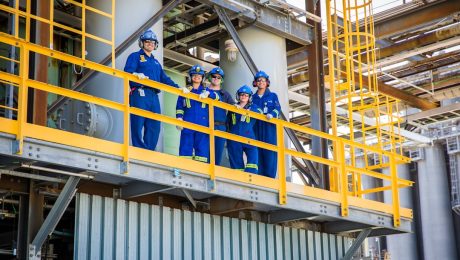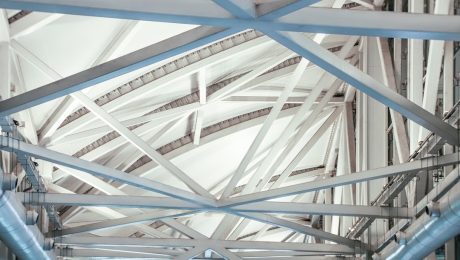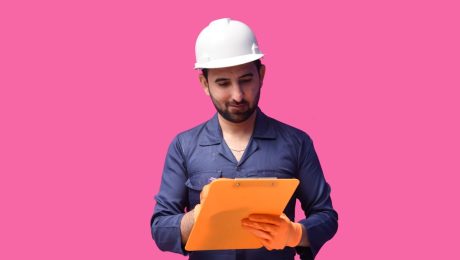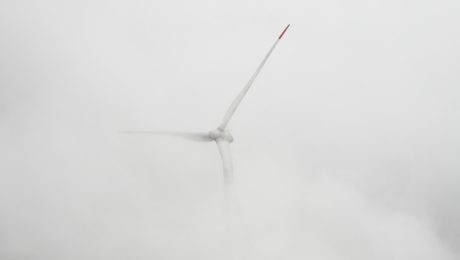Achieving a production capacity of 000 tons per year represents a significant milestone for any manufacturing or industrial enterprise. This level of output necessitates meticulous planning, robust infrastructure, and efficient operational strategies. This post delves into the crucial aspects of managing and optimizing a 000 ton/year production capacity, exploring the challenges and opportunities it presents.
1. Scaling Operations for 000 Ton/Year Production
Scaling operations to meet a 000 ton/year target requires a phased approach. This involves a thorough assessment of current infrastructure, including production facilities, equipment, and workforce capabilities. Are your existing facilities large enough to accommodate the increased production volume? Do you have the necessary machinery and technology to maintain efficiency at this scale? A detailed capacity analysis is crucial, identifying potential bottlenecks and areas requiring upgrades or expansion. This might involve investing in new machinery, automating processes, or implementing lean manufacturing principles to maximize efficiency and minimize waste. Human resources are also a key consideration; sufficiently trained personnel and a robust management structure are vital to ensure smooth operations at this increased scale.
2. Optimizing Efficiency in a 000 Ton/Year Facility
Maintaining efficiency at a 000 ton/year production level is paramount. Strategies such as Just-in-Time (JIT) inventory management can significantly reduce storage costs and minimize waste. Implementing robust quality control measures throughout the production process ensures that output meets required standards, minimizing costly rework or product recalls. Regular maintenance of equipment is also critical to prevent downtime and ensure consistent production. Data analytics plays a significant role in identifying areas for improvement; by tracking key performance indicators (KPIs) such as production output, defect rates, and downtime, businesses can pinpoint bottlenecks and optimize their processes for maximum efficiency. The implementation of Enterprise Resource Planning (ERP) systems can further streamline operations by integrating various aspects of the business, from procurement to sales.
3. Managing Risk in High-Volume Production
Producing at a 000 ton/year scale introduces significant risks. Supply chain disruptions, equipment failures, and labor shortages can all severely impact production. Developing contingency plans to mitigate these risks is crucial. This includes diversifying suppliers, having backup equipment readily available, and building a strong and flexible workforce. Investing in robust quality control systems and implementing safety protocols minimizes the risk of accidents and product defects. Regular risk assessments should be conducted to identify and address potential threats proactively. Insurance policies should also be considered to protect against unforeseen circumstances such as natural disasters or equipment malfunctions.
4. Financial Planning and Resource Allocation for 000 Ton/Year Output
Achieving a 000 ton/year production capacity requires significant financial investment. This includes capital expenditures on new equipment and facilities, as well as operational expenses such as raw materials, labor, and energy. A comprehensive financial plan is essential, outlining projected costs, revenue streams, and return on investment (ROI). Accurate forecasting of demand is crucial to ensure that production levels align with market needs and avoid overproduction or stockouts. Securing adequate funding through loans, equity financing, or other means is vital to support the expansion. Regular financial monitoring and adjustments to the plan are necessary to adapt to changing market conditions and ensure the long-term viability of the operation.
5. The Role of Technology in Achieving and Maintaining 000 Ton/Year Capacity
Technology plays a pivotal role in achieving and maintaining a 000 ton/year production capacity. Automation technologies, such as robotic systems and automated guided vehicles (AGVs), can significantly increase efficiency and reduce labor costs. Advanced data analytics tools enable real-time monitoring of production processes, allowing for proactive identification and resolution of potential issues. The use of sensors and IoT devices provides valuable data on equipment performance and potential failures, allowing for predictive maintenance and minimizing downtime. Implementing cloud-based platforms for data storage and collaboration facilitates seamless information sharing across different departments and locations, improving coordination and decision-making. Investing in advanced technologies is an investment in the long-term success of the operation.
Reaching a 000 ton/year production capacity is a challenging yet rewarding endeavor. By meticulously planning, optimizing efficiency, managing risks effectively, and leveraging technology, businesses can unlock the full potential of this significant production scale and achieve sustainable growth and profitability.
SEO Tags:
- Production Capacity
- Manufacturing Capacity
- Scaling Production
- Industrial Capacity Planning
- High-Volume Manufacturing
Steel is a ubiquitous material in modern civil engineering projects, from skyscrapers to bridges and industrial structures. A strong understanding of steel’s properties, design principles, and construction techniques is paramount for any civil engineer. This comprehensive guide explores the essential steel training needed to excel in this crucial area of civil engineering.
Understanding Steel Properties and Behavior
Before delving into design and construction, a thorough grasp of steel’s physical and mechanical properties is fundamental. This includes understanding its yield strength, tensile strength, ductility, and elasticity. Civil engineers need to know how steel behaves under different loading conditions, including tension, compression, shear, and bending. Training should cover topics like stress-strain diagrams, material testing standards (like ASTM), and the effects of temperature and corrosion on steel’s performance. Understanding these properties allows engineers to select the appropriate steel grade for a specific application, ensuring the structural integrity and safety of the project.
Steel Design Principles and Codes
Designing steel structures involves applying engineering principles and adhering to relevant design codes and standards. Training should cover the use of design software, such as RISA or ETABS, to model and analyze steel structures under various load combinations. Engineers must be proficient in calculating member sizes, connection details, and ensuring compliance with codes like AISC (American Institute of Steel Construction) or Eurocode 3. This section also covers topics like stability analysis, buckling considerations, and the design of various steel components, including beams, columns, and connections. Familiarity with limit state design philosophy is crucial for optimizing designs while maintaining safety margins.
Steel Fabrication and Detailing
The fabrication process transforms steel into the necessary structural members. Civil engineers need a basic understanding of steel fabrication techniques, including cutting, welding, and bolting. This knowledge allows for effective communication with fabricators, ensuring that the design intent is accurately translated into the final product. Steel detailing, which involves creating precise drawings and specifications for fabrication, is another critical aspect. Training should cover the use of CAD software for steel detailing and the importance of accurate dimensions, tolerances, and material specifications. Understanding the fabrication process helps engineers anticipate potential challenges and optimize designs for efficient construction.
Steel Construction Methods and Practices
On-site construction is where the design comes to life. Civil engineers should be familiar with various steel construction methods, including erection techniques, temporary supports, and safety procedures. This involves understanding the use of cranes, rigging equipment, and other specialized machinery. Training should also cover quality control and inspection procedures to ensure that the constructed structure meets the design specifications and safety standards. Understanding the practical aspects of construction helps engineers anticipate potential on-site problems and develop solutions that ensure project success and worker safety.
Advanced Topics in Steel Structures
Beyond the fundamentals, advanced topics in steel training can significantly enhance a civil engineer’s expertise. These could include specialized steel connections, such as high-strength bolted connections or welded moment connections. Furthermore, understanding advanced analysis techniques, such as finite element analysis (FEA), allows for more precise and detailed structural analysis. Exploring topics like seismic design of steel structures, fire protection of steel, and the use of innovative steel materials (e.g., high-strength steels, weathering steels) broadens the engineer’s capabilities and allows them to tackle complex and challenging projects. Staying updated on the latest advancements in steel technology is essential for remaining competitive in the field.
In conclusion, comprehensive steel training is indispensable for civil engineers seeking to design, construct, and manage successful steel structures. By understanding the material properties, design principles, fabrication processes, and construction methods, engineers can ensure the safety, efficiency, and longevity of their projects. Continuous learning and staying abreast of the latest advancements in steel technology are crucial for maintaining a high level of professional competence.
Tags: steel training, civil engineering, steel design, steel construction, structural steel
body {
font-family: sans-serif;
line-height: 1.6;
}
h1, h2, h3 {
color: #333;
}
Selecting the right piping system for a chemical plant is a critical decision impacting safety, efficiency, and operational lifespan. This intricate process requires careful consideration of numerous factors, extending beyond simple diameter and length. This comprehensive guide delves into the key aspects of chemical plant pipe selection, ensuring you navigate this complex landscape effectively.
1. Material Selection: The Cornerstone of Chemical Plant Piping
The choice of pipe material is paramount, dictated primarily by the chemical substances being transported. Different materials exhibit varying degrees of resistance to corrosion, erosion, and chemical attack. Common materials include:
- Stainless Steel (304, 316, etc.): Offers excellent corrosion resistance in many chemical environments, making it suitable for a wide range of applications. The specific grade (e.g., 316 for higher chloride resistance) is crucial.
- Carbon Steel: A cost-effective option for applications involving non-corrosive substances. However, it requires protective coatings or linings in corrosive environments.
- Duplex Stainless Steel: Combines the strength of carbon steel with the corrosion resistance of austenitic stainless steel, ideal for high-pressure and corrosive applications.
- PVC, CPVC, and other Plastics: Suitable for certain chemicals and lower-pressure applications, offering excellent corrosion resistance but limited temperature and pressure capabilities.
- Nickel Alloys (Monel, Inconel): Used in highly corrosive environments where stainless steel is insufficient, offering exceptional resistance to various acids and alkalis. These are typically more expensive.
- Hastelloy: A family of nickel-based alloys known for exceptional resistance to highly corrosive chemicals, particularly those involving oxidizing agents.
- Material Selection (as discussed above): Choosing a material inherently resistant to the specific chemicals is the primary defense.
- Protective Coatings and Linings: Applying coatings like epoxy, polyurethane, or specialized linings (e.g., PTFE) to the pipe’s inner surface can provide an additional barrier against corrosion.
- Cathodic Protection: An electrochemical technique that protects a metal surface from corrosion by making it the cathode of an electrochemical cell.
- Corrosion Inhibitors: Adding chemicals to the transported fluid can slow down the corrosion process.
- Regular Inspection and Maintenance: Frequent inspections can detect corrosion early, allowing for timely repairs and preventing catastrophic failures.
- Operating Pressure: The maximum pressure the system will experience during normal operation.
- Design Pressure: A higher pressure rating that accounts for safety factors and potential pressure surges.
- Pipe Schedule: Indicates the pipe wall thickness, influencing pressure rating. Higher schedules mean thicker walls and higher pressure resistance.
- Fluid Velocity: Excessive velocity can cause erosion and increased pressure drop. Proper flow calculations are essential to optimize velocity and minimize these issues.
- Fluid Density and Viscosity: These properties influence pressure drop and require accurate calculations for proper pipe sizing.
- ASME B31.3: Process Piping – Covers design, construction, testing, and inspection of process piping systems.
- API 510: Pressure Vessel Inspection Code – While focused on vessels, it provides relevant information for piping connected to pressure vessels.
- OSHA Regulations: Occupational Safety and Health Administration regulations dictate safety requirements for handling hazardous materials.
- Local and National Regulations: Specific regulations vary by location and must be carefully considered.
- Welding: Provides a strong and permanent joint, suitable for high-pressure applications. Requires skilled welders and adherence to strict welding procedures.
- Flanged Joints: Allow for easier disassembly and maintenance, but require careful gasket selection and torque control to ensure a leak-free seal.
- Threaded Connections: Suitable for lower pressure applications, offering ease of assembly but potentially less robust than welded or flanged connections.
- Compression Fittings: Relatively easy to install and suitable for smaller diameter pipes, but may be less suitable for high-pressure or corrosive applications.
Material selection must also consider factors like temperature, pressure, and the potential for stress corrosion cracking. Material compatibility charts and expert consultation are essential for making informed decisions.
2. Corrosion Resistance: Mitigating Chemical Degradation
Corrosion is a significant concern in chemical plants, leading to leaks, equipment failure, and safety hazards. Understanding the corrosive nature of the handled chemicals is fundamental. Methods to mitigate corrosion include:
3. Pressure Ratings and Flow Calculations: Ensuring System Integrity
Piping systems must withstand the operating pressures and flow rates of the chemical processes. Accurate pressure rating calculations are critical to prevent leaks and ruptures. Factors to consider include:
4. Regulatory Compliance and Safety Standards: Adhering to Industry Best Practices
Chemical plants operate under stringent safety regulations to minimize environmental risks and protect workers. Pipe selection must adhere to relevant codes and standards such as:
Compliance requires meticulous documentation, including material certifications, pressure testing reports, and adherence to welding procedures.
5. Joint Selection and Installation: Securing Leak-Free Connections
Proper joint selection and installation are crucial for leak-free operation and safety. Various methods exist, each with its strengths and limitations:
The selection of jointing methods must consider the pipe material, operating pressure, and the nature of the transported chemicals. Proper installation techniques are essential to prevent leaks and ensure system integrity.
By carefully considering these factors, chemical plant operators can select the optimal piping system, maximizing safety, efficiency, and the lifespan of their facilities. This detailed approach minimizes risks, ensures regulatory compliance, and contributes to the overall success of the chemical plant operation.
SEO Tags:
Chemical Plant Piping, Pipe Material Selection, Corrosion Resistance Piping, Process Piping Design, Chemical Plant Safety
Taking a product from a promising prototype to successful mass production is a significant hurdle for many businesses. It requires meticulous planning, careful execution, and a deep understanding of the manufacturing process. This comprehensive guide will navigate you through the key stages, helping you transform your innovative idea into a commercially viable reality.
1. Design for Manufacturing (DFM): Optimizing for Scalability
Before even considering mass production, your prototype needs a thorough DFM review. This crucial step involves analyzing your design for manufacturability, cost-effectiveness, and assembly efficiency. DFM experts identify potential issues early on, such as complex geometries that are difficult to produce, materials unsuitable for large-scale manufacturing, or assembly processes that are too time-consuming. This iterative process might require modifications to your prototype, but these changes are far less costly and time-consuming at this stage than later in the production process. Consider factors like material selection (considering availability and cost), tolerances (how precise dimensions need to be), and the overall complexity of the design. Simpler designs are generally easier and cheaper to manufacture in large quantities.
2. Tooling and Fixture Development: Preparing for High-Volume Production
Once your design is finalized and optimized for manufacturing, the next step is tooling and fixture development. This involves creating the specialized tools and equipment necessary for mass production. For example, injection molding requires custom molds, while machining operations need precise jigs and fixtures to ensure consistent quality. The cost of tooling can be substantial, so careful planning and selection of manufacturing processes are crucial. This phase also involves rigorous testing and validation to ensure the tools and fixtures can produce parts that meet the required specifications. Consider the longevity of the tools – will they be able to withstand the demands of mass production, or will they require frequent replacements? Choosing durable, high-quality tooling is an investment that pays off in the long run.
3. Supply Chain Management: Securing Reliable Resources
Efficient supply chain management is the backbone of successful mass production. This involves identifying and securing reliable suppliers for raw materials, components, and sub-assemblies. A robust supply chain ensures a consistent flow of materials to meet production demands. Consider factors such as supplier reliability, lead times, quality control measures, and pricing. Diversifying your supply chain can mitigate risks associated with single-source dependency. Developing strong relationships with key suppliers is crucial for effective communication, collaboration, and problem-solving. Implementing inventory management strategies to optimize stock levels and minimize waste is also vital for cost efficiency.
4. Quality Control and Assurance: Maintaining Consistent Standards
Maintaining consistent product quality throughout mass production is paramount. A robust quality control (QC) system is essential to identify and address defects early on. This involves implementing inspection procedures at various stages of the manufacturing process, from incoming materials to finished goods. Statistical process control (SPC) techniques can help monitor production processes and identify potential issues before they escalate. Implementing a quality management system, such as ISO 9001, demonstrates a commitment to quality and can enhance customer confidence. Regular audits and reviews of the QC system are necessary to ensure its effectiveness and identify areas for improvement. Remember that addressing quality issues early is far less expensive than dealing with large-scale recalls or customer dissatisfaction.
5. Scaling Up Production: Gradual Transition and Optimization
Scaling up production from a small-scale prototype run to mass production is a gradual process that requires careful planning and execution. It’s rarely a smooth, linear progression. Start with a pilot production run to test the entire process before committing to full-scale production. This allows for identifying and resolving any unforeseen issues, optimizing production parameters, and fine-tuning the supply chain. Monitor key performance indicators (KPIs) such as production output, defect rates, and cycle times to track progress and identify areas for improvement. Continuous improvement methodologies, such as Lean manufacturing and Six Sigma, can help optimize processes and reduce waste. Regularly review and adapt your strategy based on performance data and market feedback.
Successfully navigating the transition from prototype to mass production requires a multidisciplinary approach involving engineers, designers, procurement specialists, and quality control professionals. By carefully planning each stage and addressing potential challenges proactively, you can increase the likelihood of a smooth and successful launch of your product.
SEO Tags:
prototype, mass production, manufacturing process, design for manufacturing (DFM), supply chain management
Choosing the right steel supplier is crucial for any business relying on steel for its operations. A poor choice can lead to project delays, compromised quality, and significant cost overruns. This comprehensive guide will walk you through the essential steps to effectively evaluate potential steel suppliers and select the perfect partner for your needs.
1. Assessing Steel Quality and Certifications
The cornerstone of any steel supplier evaluation is the quality of their steel. Don’t solely rely on marketing materials. Demand evidence of consistent quality control. Look for certifications such as ISO 9001 (quality management systems), ISO 14001 (environmental management systems), and industry-specific certifications relevant to your steel requirements (e.g., certifications for specific grades or applications). Request copies of their quality control procedures and test results. Independent third-party audits can provide an extra layer of assurance regarding their adherence to quality standards.
Investigate their material traceability systems. Can they provide detailed documentation tracking the origin and processing of the steel? This is vital for ensuring compliance with industry regulations and for managing potential defects or recalls. Consider visiting their facilities to witness their operations firsthand, if possible. This allows for a direct assessment of their equipment, cleanliness, and overall operational efficiency.
2. Evaluating Supplier Reliability and Delivery Performance
Reliability is paramount. A supplier who consistently meets deadlines and provides accurate delivery information is invaluable. Request references from their existing clients and thoroughly vet their track record. Inquire about their on-time delivery rate, lead times, and their ability to handle unexpected disruptions to the supply chain. Analyze their historical performance data, if available. A consistently high on-time delivery rate demonstrates a commitment to meeting customer expectations.
Investigate their logistics capabilities. Do they have their own transportation network or rely on third-party logistics providers? Understanding their logistics strategy will help you assess their ability to deliver your steel efficiently and cost-effectively. Inquire about their inventory management practices to ensure they can meet your anticipated demand without significant delays.
3. Comparing Pricing and Payment Terms
While price is a significant factor, it shouldn’t be the sole determinant. A lower price may be offset by inferior quality or unreliable delivery. Obtain detailed quotations from multiple suppliers, ensuring that the specifications are identical for accurate comparison. Analyze the pricing structure – is it fixed, variable, or a combination of both? Consider the total cost of ownership, which includes not only the purchase price but also transportation, handling, and potential quality-related costs.
Negotiate favorable payment terms. This could include extended payment periods, discounts for bulk orders, or other incentives. Ensure that the payment terms are clearly defined and documented to avoid any misunderstandings or disputes. Establish a clear understanding of their pricing policies, including any potential surcharges or hidden fees.
4. Assessing Customer Service and Communication
Effective communication and responsive customer service are crucial for a smooth working relationship. Evaluate their responsiveness to inquiries, their ability to resolve issues promptly, and their overall communication style. Do they have dedicated account managers? How accessible are key personnel? A supplier with excellent customer service will proactively address potential problems and ensure a seamless experience.
Consider their technical support capabilities. Do they offer technical assistance with material selection, processing, or application? This can be particularly valuable for complex projects or specialized steel grades. A good supplier will provide comprehensive support throughout the entire process.
5. Analyzing Financial Stability and Business Practices
A financially stable supplier is less likely to experience disruptions that could impact your projects. Review their financial statements, if available, or consult credit rating agencies to assess their financial health. Look for signs of consistent revenue growth, strong profitability, and a healthy debt-to-equity ratio. A supplier with a strong financial position is more likely to withstand economic downturns and supply chain disruptions.
Investigate their ethical and sustainable business practices. Are they committed to environmental responsibility and fair labor practices? Increasingly, businesses are prioritizing suppliers who align with their values and sustainability goals. Consider their commitment to responsible sourcing of materials and their adherence to relevant environmental regulations.
By carefully considering these factors, you can significantly improve your chances of selecting a steel supplier that consistently delivers high-quality materials, reliable service, and cost-effective solutions. Remember, a strong partnership with your steel supplier is essential for the long-term success of your business.
SEO Tags:
- steel supplier evaluation
- steel quality control
- steel supplier selection
- steel sourcing strategy
- metal supplier assessment
EN 10217 is a crucial European standard defining the requirements for seamless steel pipes used in a wide range of applications. Understanding this standard is vital for engineers, procurement professionals, and anyone involved in selecting and using steel pipes. This comprehensive guide will delve into the intricacies of EN 10217, providing a clear and concise overview.
Understanding the EN 10217 Standard and its Scope
EN 10217, officially titled “Hot-finished seamless steel tubes for pressure purposes,” specifies the technical delivery conditions for hot-finished seamless steel tubes intended for pressure applications. It doesn’t cover all seamless steel tubes; for example, cold-drawn or cold-rolled seamless tubes are covered under different standards. The standard covers a broad spectrum of steel grades, each designed to meet specific strength, ductility, and other mechanical property requirements. The scope extends to various dimensions, wall thicknesses, and tolerances, ensuring suitability for diverse applications, from low-pressure water lines to high-pressure systems in power generation and petrochemical industries.
The standard is structured to provide detailed information on each grade of steel, including chemical composition, mechanical properties (tensile strength, yield strength, elongation), and testing procedures. This ensures consistent quality and reliability across different manufacturers and batches.
Key Grades within the EN 10217 Series: A Detailed Look
The EN 10217 standard encompasses numerous grades, each designated with a specific alphanumeric code. These grades are categorized based on their chemical composition and mechanical properties, leading to their suitability for specific applications. Some of the most common grades include:
- 1.0038: A low-carbon steel grade offering good weldability and formability, often used in low-pressure applications.
- 1.0044: A slightly higher strength grade compared to 1.0038, suitable for applications requiring enhanced mechanical properties.
- 1.0048: A higher-strength, low-alloy steel offering improved yield and tensile strength, commonly used in more demanding pressure applications.
- 1.0058: A high-strength, low-alloy steel grade with excellent mechanical properties, frequently used in high-pressure applications.
- 1.0068: Designed for high-pressure applications requiring exceptional strength and toughness. Often used in demanding environments.
Selecting the appropriate grade is crucial for ensuring the structural integrity and longevity of the piping system. The choice depends heavily on the operating pressure, temperature, and the nature of the fluid being conveyed.
Manufacturing Processes and Quality Control in EN 10217 Pipes
The manufacturing process for EN 10217 seamless steel pipes typically involves hot-finishing techniques. This involves heating a steel billet to a high temperature, then piercing and rolling it into a seamless tube. Subsequent processes such as heat treatment and straightening are employed to achieve the desired dimensions and mechanical properties. Strict quality control measures are implemented throughout the manufacturing process to ensure compliance with the standard’s specifications. This includes:
- Chemical composition analysis: Ensuring the steel meets the required chemical composition for the specified grade.
- Mechanical testing: Verifying that the pipe meets the specified tensile strength, yield strength, and elongation requirements.
- Dimensional inspection: Checking the pipe’s outer diameter, wall thickness, and straightness to ensure they are within the permitted tolerances.
- Non-destructive testing (NDT): Employing techniques like ultrasonic testing (UT) or eddy current testing (ECT) to detect internal flaws or defects.
These rigorous quality control procedures are essential for ensuring the safety and reliability of the pipes in service.
Applications of EN 10217 Seamless Steel Pipes: A Diverse Range
The versatility of EN 10217 seamless steel pipes makes them suitable for a wide range of applications across various industries. Their strength, durability, and resistance to pressure make them ideal for:
- Oil and gas industry: Transporting crude oil, natural gas, and refined petroleum products.
- Power generation: Used in boiler feedwater systems, steam lines, and other high-pressure applications in power plants.
- Chemical processing: Handling various chemicals and corrosive fluids in chemical plants.
- Water and wastewater treatment: Transporting water and wastewater in pipelines.
- Construction and infrastructure: Used in structural applications, scaffolding, and other construction projects.
The specific grade of EN 10217 pipe selected for a particular application depends on the operating conditions, such as pressure, temperature, and the nature of the fluid being conveyed.
Ensuring Compliance and Selecting the Right EN 10217 Pipe
Compliance with EN 10217 is paramount for ensuring the safety and reliability of piping systems. When selecting EN 10217 pipes, it is crucial to verify that the pipes meet all the requirements specified in the standard. This involves checking the manufacturer’s documentation, including mill certificates and test reports, to confirm that the pipes have undergone the necessary quality control procedures and meet the specified grade and dimensions. Careful consideration of the application’s specific demands, including pressure, temperature, and corrosive environment, is essential to select the appropriate grade of steel.
Furthermore, consulting with experienced engineers and material specialists can ensure the correct selection and application of EN 10217 pipes, contributing to the safety and efficiency of the overall system.
This comprehensive guide provides a foundational understanding of EN 10217 seamless steel pipes. By understanding the different grades, applications, and quality control measures, engineers and professionals can confidently select and utilize these crucial components in various industries.
SEO-Friendly Tags:
- EN 10217
- Seamless Steel Pipes
- Pressure Pipes
- Steel Pipe Grades
- European Steel Pipe Standard
Structural steel has long been a cornerstone of modern construction, offering a unique blend of strength, versatility, and efficiency. From skyscrapers to bridges, and everything in between, steel’s inherent properties make it an unparalleled choice for a wide array of projects. This comprehensive guide delves into the key advantages of utilizing structural steel, highlighting why it remains a leading material in the construction industry.
Unmatched Strength and Durability: The Foundation of Resilience
The most immediately apparent benefit of structural steel is its exceptional strength-to-weight ratio. This means that steel can support significant loads while remaining relatively lightweight compared to other materials like concrete or timber. This characteristic is crucial in high-rise buildings, where minimizing weight is essential for structural integrity and foundation stability. Furthermore, steel’s inherent durability ensures longevity. Properly protected steel structures can withstand extreme weather conditions, seismic activity, and the test of time, requiring minimal maintenance compared to other materials that are prone to degradation and decay.
The high tensile strength of steel also allows for the creation of slender, elegant designs that would be impossible with other materials. This translates to larger, more open interior spaces and aesthetically pleasing exteriors. The ability to withstand high stresses makes steel ideal for applications where safety and reliability are paramount, such as bridges, stadiums, and industrial facilities.
Versatility and Design Flexibility: Shaping the Future of Construction
Structural steel offers unparalleled design flexibility. Its malleability allows for intricate shapes and configurations, enabling architects and engineers to realize even the most ambitious designs. Steel can be easily fabricated into various shapes, including beams, columns, and trusses, to meet specific project requirements. This adaptability extends to prefabrication, where components can be manufactured off-site and assembled on-site, significantly reducing construction time and costs.
The ability to connect steel members using various techniques, such as welding and bolting, further enhances its versatility. This allows for complex structural systems to be created with precision and efficiency. Whether it’s a simple residential structure or a complex infrastructure project, steel’s adaptability makes it a highly sought-after material.
Cost-Effectiveness and Time Savings: Streamlining the Construction Process
While the initial cost of steel may seem higher than some alternative materials, the long-term cost-effectiveness of structural steel becomes evident when considering factors like durability, maintenance, and construction speed. The speed of construction is significantly increased with prefabricated steel components, minimizing labor costs and project completion time. This translates to substantial financial savings for developers and contractors.
The ease of fabrication and assembly of steel structures also reduces labor costs compared to more labor-intensive construction methods involving other materials. Furthermore, the longevity of steel structures reduces the need for frequent repairs and replacements, resulting in lower long-term maintenance costs.
Sustainability and Environmental Considerations: A Responsible Choice
Contrary to common misconceptions, structural steel is a highly sustainable building material. Steel is 100% recyclable, and the recycling process consumes significantly less energy than producing new steel from raw materials. This contributes to a reduced carbon footprint compared to many other construction materials. Moreover, steel structures are designed for longevity, reducing the need for frequent replacements and minimizing waste throughout their lifecycle.
The construction industry is increasingly focusing on sustainable building practices, and steel’s recyclability and durability align perfectly with these goals. Furthermore, advancements in steel production are continuously improving its environmental performance, making it a responsible choice for environmentally conscious projects.
Safety and Security: Ensuring Peace of Mind
Structural steel’s inherent strength and resilience contribute significantly to the safety and security of buildings and infrastructure. Its ability to withstand extreme loads ensures the protection of occupants in the event of natural disasters or other unforeseen circumstances. Steel’s resistance to fire and other hazards further enhances its safety profile, making it a reliable choice for applications where safety is paramount.
The predictable behavior of steel under stress allows engineers to accurately model and analyze structural performance, ensuring the design and construction of safe and secure structures. This contributes to a higher level of confidence in the long-term stability and safety of steel-framed buildings and infrastructure projects.
In conclusion, the benefits of structural steel are multifaceted and compelling. From its exceptional strength and durability to its versatility, cost-effectiveness, sustainability, and inherent safety, steel continues to be a leading material in the construction industry. Its ability to adapt to evolving design trends and technological advancements ensures its continued relevance for generations to come.
SEO Tags:
- Structural Steel Benefits
- Advantages of Steel Construction
- Sustainable Steel Buildings
- Steel Construction Materials
- Durable Steel Structures
Radiographic inspection (RT) is a crucial non-destructive testing (NDT) method used to detect internal flaws and imperfections in various materials, including pipes. This powerful technique utilizes penetrating radiation to create images revealing hidden defects that could compromise structural integrity and lead to costly failures. This comprehensive guide will delve into the intricacies of radiographic inspection in pipes, exploring its applications, techniques, advantages, limitations, and safety protocols.
Understanding the Principles of Radiographic Pipe Inspection
Radiographic inspection relies on the principle of differential absorption of radiation. A source of ionizing radiation, typically X-rays or gamma rays, is directed at the pipe. The radiation passes through the pipe, and the intensity of the radiation reaching the film or detector on the other side varies depending on the material’s density and thickness. Denser areas, like welds or metallic inclusions, absorb more radiation, resulting in lighter areas on the radiograph. Conversely, thinner areas or voids absorb less radiation, resulting in darker areas. By analyzing these variations in intensity, inspectors can identify internal flaws such as cracks, porosity, inclusions, and corrosion.
Common Techniques Used in Radiographic Pipe Inspection
Several techniques are employed in radiographic pipe inspection, each suited to specific pipe sizes, materials, and defect types. These include:
- Double-wall exposure: This technique uses a single exposure to image both walls of the pipe simultaneously. It’s efficient but requires careful positioning to ensure both walls are adequately imaged.
- Single-wall exposure: This method images one wall of the pipe at a time, providing greater detail and allowing for easier interpretation of complex defects. It is particularly useful for thicker pipes or those with complex geometries.
- Panoramic radiography: This technique utilizes specialized equipment to image long sections of pipe in a single exposure, ideal for inspecting long pipelines or large diameter pipes.
- Computed radiography (CR) and digital radiography (DR): These digital techniques replace traditional film with digital detectors, offering advantages such as immediate image visualization, enhanced image quality, and easier data management.
Applications of Radiographic Pipe Inspection in Various Industries
Radiographic inspection plays a vital role in ensuring the safety and reliability of pipelines across diverse industries. Some key applications include:
- Oil and gas industry: Inspecting welds in pipelines transporting hydrocarbons is crucial for preventing leaks and environmental disasters.
- Chemical processing: RT ensures the integrity of pipelines handling corrosive chemicals, preventing leaks and maintaining operational safety.
- Power generation: Radiographic inspection is used to assess the condition of pipes in nuclear power plants and other power generation facilities.
- Water and wastewater treatment: RT helps maintain the integrity of pipelines carrying water and wastewater, preventing leaks and contamination.
- Construction: Inspection of welded joints in structural steel pipes used in building construction ensures structural integrity.
Advantages and Limitations of Radiographic Pipe Inspection
Radiographic inspection offers several advantages, including its ability to detect internal flaws invisible to other NDT methods. However, it also has limitations:
Advantages:
- High sensitivity: Detects a wide range of defects, including small cracks and porosity.
- Permanent record: Radiographs provide a permanent record of the inspection, allowing for future reference and analysis.
- Versatile: Applicable to various pipe materials, sizes, and configurations.
- Comprehensive: Can image large areas of pipe in a single exposure (depending on the technique).
Limitations:
- Radiation safety concerns: Requires strict adherence to safety protocols and trained personnel.
- Cost: Can be relatively expensive compared to some other NDT methods.
- Accessibility limitations: May not be suitable for inspecting pipes in confined or inaccessible locations.
- Interpretation expertise: Requires trained and experienced personnel to interpret the radiographs accurately.
Safety Procedures in Radiographic Pipe Inspection
Radiographic inspection involves ionizing radiation, posing potential health risks if safety protocols are not strictly followed. Key safety measures include:
- Radiation shielding: Using appropriate shielding materials to protect personnel from radiation exposure.
- Distance: Maintaining a safe distance from the radiation source during exposure.
- Time: Minimizing the time spent in the radiation field.
- Radiation monitoring: Regular monitoring of radiation levels using dosimeters and other monitoring equipment.
- Training and certification: Personnel involved in radiographic inspection must receive proper training and certification.
- Emergency procedures: Establishing clear emergency procedures in case of accidental exposure.
Adherence to these safety procedures is paramount to ensuring the well-being of inspectors and others in the vicinity.
Radiographic inspection is a powerful tool for ensuring the integrity of pipe systems across various industries. While it presents certain challenges, the benefits in terms of safety and cost savings far outweigh the limitations, making it an indispensable technique in modern pipeline inspection and maintenance.
body {
font-family: sans-serif;
line-height: 1.6;
}
h1, h2, h3 {
color: #333;
}
h1 {
font-size: 2.5em;
}
h2 {
font-size: 2em;
}
h3 {
font-size: 1.5em;
}
The engineering field is constantly evolving, demanding continuous learning and adaptation. Whether you’re a fresh graduate eager to launch your career, a seasoned professional seeking specialization, or simply passionate about expanding your knowledge, access to high-quality educational content is crucial. This comprehensive guide explores various avenues to enhance your engineering expertise and propel your career forward.
Online Courses: Your Gateway to Specialized Knowledge
Massive Open Online Courses (MOOCs) platforms like Coursera, edX, Udacity, and FutureLearn offer a vast library of engineering courses. These platforms cater to all levels, from introductory courses covering fundamental concepts to advanced specializations in niche areas like robotics, AI, and sustainable engineering. Many courses are offered by prestigious universities and industry leaders, ensuring high-quality content and practical relevance. You can choose from various learning formats, including video lectures, quizzes, assignments, and peer-reviewed projects, fostering a dynamic and engaging learning experience. The flexibility of online learning allows you to study at your own pace and convenience, fitting seamlessly into busy schedules.
Industry Certifications: Boosting Your Credibility and Employability
Industry certifications demonstrate your proficiency in specific engineering domains and significantly enhance your career prospects. Organizations like the Institute of Electrical and Electronics Engineers (IEEE), the American Society of Mechanical Engineers (ASME), and various professional bodies offer a wide range of certifications. These certifications often involve rigorous examinations and practical assessments, validating your skills and knowledge. Earning a relevant certification not only strengthens your resume but also signals your commitment to professional development, making you a more attractive candidate for employers. Furthermore, certain certifications are prerequisites for specific roles or projects, opening doors to exciting career opportunities.
Books and Journals: The Foundation of Engineering Knowledge
While online resources are invaluable, traditional learning materials remain essential. Textbooks provide a structured and in-depth understanding of fundamental engineering principles. Staying updated with the latest research and advancements requires engaging with peer-reviewed journals published by reputable publishers and professional organizations. These publications offer insights into cutting-edge technologies, innovative solutions, and emerging trends within specific engineering disciplines. Building a strong foundation through textbooks and keeping abreast of current research through journals are crucial for long-term professional success.
Conferences and Workshops: Networking and Hands-on Learning
Attending industry conferences and workshops provides invaluable opportunities for networking, knowledge sharing, and hands-on learning. These events bring together leading experts, researchers, and practitioners, allowing for direct interaction and the exchange of ideas. Workshops often offer practical training sessions, providing you with the skills and experience to apply theoretical knowledge in real-world scenarios. Networking opportunities at conferences can lead to collaborations, mentorship, and potential job prospects. The insights gained from attending these events are often invaluable and cannot be replicated through online learning alone.
Mentorship and Professional Networks: Guidance and Support
Seeking mentorship from experienced engineers can provide invaluable guidance and support throughout your career journey. A mentor can offer personalized advice, share their insights into industry trends, and help you navigate challenges. Joining professional engineering networks and societies provides opportunities to connect with like-minded individuals, collaborate on projects, and stay updated on industry news and events. These networks offer a supportive community, fostering professional growth and providing access to valuable resources and opportunities.
In conclusion, continuous learning is paramount for success in the dynamic field of engineering. By leveraging the diverse educational resources available – from online courses and industry certifications to books, journals, conferences, and professional networks – you can significantly enhance your skills, expand your knowledge, and propel your career to new heights.
SEO-Friendly Tags:
- Engineering Education
- Online Engineering Courses
- Engineering Certifications
- Professional Development Engineering
- STEM Education
Wind turbines, the silent giants of renewable energy, rely on a complex interplay of engineering marvels to harness the power of the wind. While the blades themselves are captivating, their performance and longevity hinge critically on the often-overlooked yet vital: the blade support systems. These systems are the unsung heroes, ensuring the blades rotate smoothly, efficiently, and safely, even under extreme weather conditions. This comprehensive guide delves into the intricacies of these crucial components.
1. The Anatomy of a Wind Turbine Blade Support System: A Detailed Look
A wind turbine blade support system is more than just a simple connection; it’s a sophisticated assembly designed to withstand immense forces. The primary components include the blade root, the pitch bearing, the main bearing, and the yaw system. The blade root is the critical interface between the blade and the hub, transmitting the generated torque and aerodynamic loads. The pitch bearing allows for the adjustment of the blade angle (pitch control), optimizing energy capture and protecting the turbine during high winds. The main bearing supports the entire rotor assembly, carrying the weight of the blades and resisting the substantial bending moments caused by wind loads. Finally, the yaw system allows the entire nacelle (containing the gearbox, generator, and other components) to rotate, keeping the blades optimally aligned with the wind direction. Each component plays a crucial role in the system’s overall performance and reliability.
2. Materials Science in Blade Support: Strength, Durability, and Longevity
The materials used in wind turbine blade support systems are chosen for their exceptional strength-to-weight ratio, fatigue resistance, and corrosion resistance. High-strength steels, advanced composites like carbon fiber reinforced polymers (CFRP), and specialized bearings are commonly employed. The selection of materials depends on factors such as turbine size, operating conditions, and cost considerations. Steel remains a prevalent choice for its high strength and relatively low cost, but its susceptibility to corrosion necessitates protective coatings and regular maintenance. CFRP composites offer superior strength and lighter weight, improving efficiency but increasing the overall cost. Bearings, often made from high-quality steel alloys or ceramics, are crucial for smooth, low-friction rotation and must endure immense loads and cyclical stresses.
3. Maintenance and Inspection: Ensuring Optimal Performance and Safety
Regular maintenance and inspection of blade support systems are paramount to ensuring the safety and efficiency of wind turbines. This involves visual inspections for signs of wear, corrosion, or damage, as well as more in-depth assessments using advanced non-destructive testing (NDT) techniques such as ultrasonic testing and radiography. Lubrication of bearings is critical to minimizing friction and extending their lifespan. Regular tightening of bolts and connections is also essential to prevent loosening and fatigue failure. The frequency of maintenance depends on various factors, including environmental conditions, turbine design, and operational history. Proactive maintenance strategies, coupled with predictive maintenance technologies using sensors and data analytics, are increasingly being adopted to optimize maintenance schedules and minimize downtime.
4. Advancements and Innovations in Blade Support Technologies
The field of wind turbine blade support systems is constantly evolving, driven by the need for greater efficiency, reliability, and cost-effectiveness. Research focuses on developing new materials with enhanced properties, improved bearing designs for reduced friction and increased lifespan, and advanced monitoring systems for early detection of potential problems. The integration of smart sensors and condition-based monitoring systems allows for real-time assessment of the health of the support systems, enabling predictive maintenance and reducing unplanned downtime. Advances in lubrication technologies, utilizing advanced lubricants and lubrication systems, also contribute to improved performance and reduced maintenance requirements. Furthermore, research into active control systems, which can adjust the support system’s response to changing wind conditions in real-time, is paving the way for more robust and efficient turbines.
5. The Future of Wind Turbine Blade Support: Sustainability and Efficiency
The future of wind turbine blade support systems is inextricably linked to the broader goals of sustainability and efficiency in renewable energy. This means a continued focus on developing lightweight, durable, and recyclable materials. Lifecycle assessment (LCA) methodologies are being increasingly employed to evaluate the environmental impact of different materials and designs. Research into bio-based materials and sustainable manufacturing processes is gaining momentum. Furthermore, the integration of advanced digital technologies, such as artificial intelligence (AI) and machine learning (ML), holds immense potential for optimizing the design, operation, and maintenance of these critical components. By leveraging data-driven insights and predictive analytics, it will be possible to further enhance the reliability, efficiency, and lifespan of wind turbine blade support systems, ultimately contributing to a more sustainable energy future.
Tags: Wind Turbine Blades, Blade Support Systems, Wind Turbine Maintenance, Wind Energy Technology, Renewable Energy Engineering



